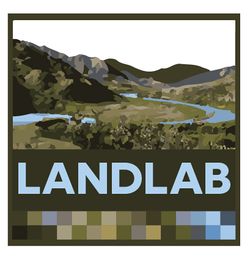Lab-0014
CSDMS Workbench: Landlab
Contributor(s)

Landlab is an open-source Python-language package for numerical modeling of Earth surface dynamics. Landlab was designed for disciplines that quantify Earth surface dynamics such as geomorphology, hydrology, glaciology, and stratigraphy. It can also be used in related fields. Scientists who use this type of model often build their own unique model from the ground up, re-coding the basic building blocks of their landscape model rather than taking advantage of codes that have already been written. Landlab saves practitioners from the need for this kind of re-invention by providing standardized components that they can re-use. Detailed information about Landlab can be accessed at https://landlab.csdms.io.
Landlab is an element of the CSDMS Workbench, an integrated system of software tools, technologies, and standards for building and coupling models. Learn more at https://csdms.colorado.edu/wiki/Workbench.
Classroom organization
In this lab, we will use different Landlab components for modeling earth surface processes. This lab includes two Jupyter Notebooks. One illustrates running the deAlmeida overland flow component in an extremely simple-minded way on a real topography, then shows it creating a flood sequence along an inclined surface with an oscillating water surface at one end. The other one illustrates how you can use Landlab to construct a simple two-dimensional numerical model on a regular (raster) grid, using a simple forward-time, centered-space numerical scheme.
Skills
- Learn to use deAlmeida Overland Flow Landlab component to create a flood sequence.
- Learn how to use Landlab to construct a simple two-dimensional numerical model on a regular (raster) grid.
- Erosional degradatoin of an earthquake fault scarp
- Geomorphic diffusion for landform evolution
- Flood sequence along an inclined surface
Lab notes
This lab can be run on the explore (for educators) and jupyter (for general use) instances of EarthscapeHub: just click one of the links under the Run online using heading at the top of this page, then run the notebook in the "CSDMS" kernel.
If you don't already have an EarthscapeHub account, follow the instructions to sign up at https://csdms.colorado.edu/wiki/JupyterHub. If you're an educator, you can get EarthscapeHub accounts for you and your students--please contact us through the CSDMS Help Desk: https://csdms.github.io/help-desk.
Requirements
Running this lab locally requires the installation of Landlab; see https://landlab.csdms.io/installation.html for instructions.
References
- Hobley, D. E. J., Adams, J. M., Nudurupati, S. S., Hutton, E. W. H., Gasparini, N. M., Istanbulluoglu, E., and Tucker, G. E.: Creative computing with Landlab: an open-source toolkit for building, coupling, and exploring two-dimensional numerical models of Earth-surface dynamics, Earth Surf. Dynam., 5, 21–46, https://doi.org/10.5194/esurf-5-21-2017, 2017.
- Barnhart, K. R., Hutton, E. W. H., Tucker, G. E., Gasparini, N. M., Istanbulluoglu, E., Hobley, D. E. J., Lyons, N. J., Mouchene, M., Nudurupati, S. S., Adams, J. M., and Bandaragoda, C.: Short communication: Landlab v2.0: a software package for Earth surface dynamics, Earth Surf. Dynam., 8, 379–397, https://doi.org/10.5194/esurf-8-379-2020, 2020.
- Tucker, G. E., Hutton, E. W. H., Piper, M. D., Campforts, B., Gan, T., Barnhart, K. R., Kettner, A. J., Overeem, I., Peckham, S. D., McCready, L., and Syvitski, J., 2022: CSDMS: a community platform for numerical modeling of Earth surface processes, Geosci. Model Dev., 15, 1413–1439, https://doi.org/10.5194/gmd-15-1413-2022.
